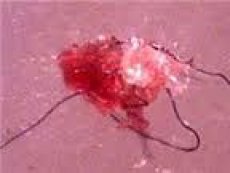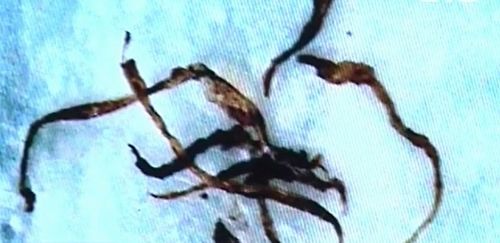New publications
Morgellons disease does exist and is possibly linked to GMOs
Last reviewed: 01.07.2025

All iLive content is medically reviewed or fact checked to ensure as much factual accuracy as possible.
We have strict sourcing guidelines and only link to reputable media sites, academic research institutions and, whenever possible, medically peer reviewed studies. Note that the numbers in parentheses ([1], [2], etc.) are clickable links to these studies.
If you feel that any of our content is inaccurate, out-of-date, or otherwise questionable, please select it and press Ctrl + Enter.

For a long time, official medicine simply turned a blind eye to Morgellons disease, considering it a myth or the ravings of madmen. Morgellons disease is characterized by strange unpleasant symptoms and its true causes remain unknown to this day. But now we at least know that it really exists.

One popular story says that it all started when Mary Leitao pulled a strange fiber out of a cut on her two-year-old son Drew's lip. Later, her son began to complain about the appearance of many itchy sores on his body, from which some white, blue or black threads could be pulled out. Drew also mentioned that he experienced a terrible sensation, as if insects were crawling under his skin.
Mary visited many doctors, including pediatricians, allergists, dermatologists, and perhaps even urologists. However, all the consultations did not give even a hint of a diagnosis, let alone treatment. Mary realized that her son had developed some disease unknown to medicine. After another unsuccessful consultation with an infectious disease specialist, Mary decided to search for information on the Internet and discovered that there were thousands of people like her son. They were all looking for treatment for a disease called Morgellons disease.
Characteristic, strange symptoms of the disease include intense itching, a sensation of something crawling under the skin, and the development of abscesses from which multi-colored fibers or threads emerge. The wounds partially heal, leaving scars, but soon appear in another place.
For a long time, the medical community did not recognize this syndrome. It was believed that such damage could be caused by the patients themselves, who suffered from “delusional parasitosis” or “delusional infection.” In other words, it was suspected that such people had a mental illness.
As The Epoch Times reports, citing NaturalNews, after numerous complaints to the Centers for Disease Control and Prevention (CDC), doctors decided to initiate research. In January 2008, the CDC awarded scientists a $300,000 grant to conduct a 3-year study of Morgellons disease. At that time, scientists mistakenly concluded that there was no disease or infectious lesion as such, and that the cause was delirium, that is, a psychological disorder. No evidence or other proof of the existence of an infectious, parasitic, or any other process was found.
However, the number of patients continued to increase, and there were suggestions that Morgellons disease could be linked to genetically modified organisms (GMOs) altered with Agrobacterium microorganisms. Lyme disease, immune deficiency, or environmental toxicity (chemtrails) are also suspected.
Soil bacteria of the genus Agrobacterium are capable of transforming plant cells using a special plasmid. If you have seen growths on a tree trunk, these are crown galls (tumors) caused by Agrobacterium. Therefore, these bacteria are often used in genetic engineering to modify products and create GMOs.
According to researchers from the State University of New York, Agrobacterium is a universal machine for transferring genes and creating foreign proteins. Therefore, they can also change human DNA. Thus, Agrobacterium has the potential to carry out horizontal DNA transfer and can be considered one of the possible causes of Morgellons disease. But this is also a theory.
Now, a new independent study from January 2012 is finally shedding some light. According to a publication in the Journal of Clinical and Experimental Dermatology, Morgellons is, in fact, a real disease.
Based on extensive studies involving microfluorescence of skin, hair, tissue, calluses and other material from patients, the researchers reported several interesting facts.
•Patients with Morgellons disease have abnormal functioning of follicular keratinocytes. Genetic errors have been documented in the DNA of hair follicle and skin cells.
•The fibers in the wounds have a unique floral composition and contain keratin (a structural protein in the skin), which means that the fibers were created by the human body. Immunohistological antibody staining revealed that the patients' threads were produced by keratinocytes.
•Changes in keratinocytes (skin) are most likely caused by spirochetosis, Lyme disease.
According to the scientists, the fibers are clearly biological in nature. They are not implanted in the skin. It is possible that their origin may be due to cross-contamination of human DNA from GMOs. This new research opens the door to recognition of the problem of Morgellons disease and may lead to new and much-needed research into the epigenetic causes of the disease.
